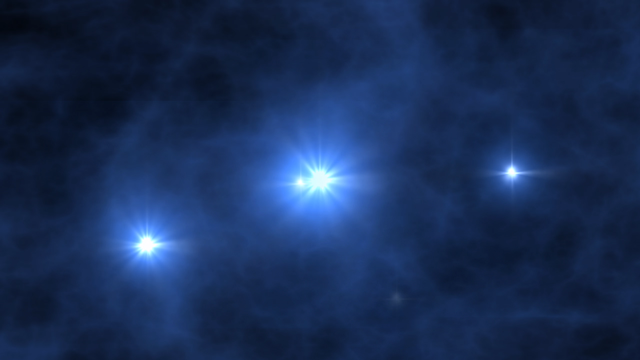400 million years after the Big Bang
After a few hundred million years, most of the Universe had cooled to a few hundred degrees above absolute zero. However, throughout the Dark Ages parts of it had been getting denser and denser and hotter and hotter. Eventually, the centres of these regions became hot enough to start burning hydrogen, and the first stars were born.
The first stars were very hot and bright, and composed almost entirely of hydrogen and helium – because that’s all that was around at the time, but they burnt some of it into heavier elements such as lithium. They also had very brief lives compared to stars like our Sun. When they exploded in violent explosions, or supernovae, they created some even heavier elements, and sent them spewing out through the Universe.
These explosions, and the bright light of the stars themselves, started to ionize some of the neutral hydrogen in the Universe, stripping the electrons away from the protons. This marked the start of a period known as “reionisation”.
After another few hundred million years, the Universe was almost completely ionized again. The image below shows a simulation of the Universe at 9 different points throughout this period or reionisation, with neutral gas in orange and ionised gas in blue. The “bubbles” of ionised gas start to appear in the far-left panel, then grow and merge throughout the reionisation period until there is almost no neutral gas left in the far right panel.

| < Dark Ages | The First Stars | First Galaxies > |
